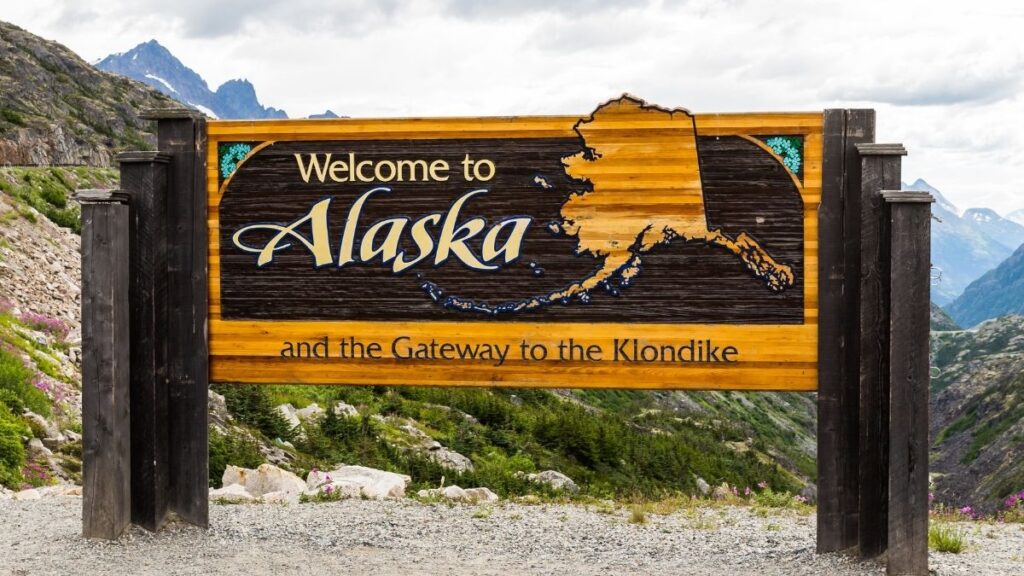
Alaska’s nickname is called “The Last Frontier” and for good reason. Anyone living in, or traveling through, this state should have basic personal preparedness in mind. Many Alaskans are Alaska preppers by nature. They have to be on some level as Alaska, while remote and sparsely populated, presents challenges to the person looking to survive there.
Alaska State Profile – Prepper Perspective
Alaska is the largest state in the nation by land mass, and like Hawaii it does not border another state. Instead, it shares a border with Canada that is 1,538 miles long. Over three-quarters of Alaska’s water is “locked up” in the form of glaciers, which cover about 5% of the state. The state is mountainous, cold, remote, and it has many days with few hours of sunlight depending on the time of year and exact location.
Before Alaska became a U.S. state, it was occupied by indigenous tribes for several millennia. It was admitted as the 49th state in 1959. While Alaska has a small state economy, it has a high per capita income. This is due to its large fishing, gas, and oil industries. The total land mass of Alaska is 665,383.9 square miles.
Cold Weather – It should come as no surprise to anybody in Alaska that you need to be prepared for cold weather. If you’ve just moved from Florida, you’re in for one heck of a surprise. Not only are you going to need the clothing to make it through such weather, but you’re going to need a means of keeping your home heated as well.
Given that you’re prepping, you understand the importance of being prepared for power outages. I think that a woodstove is your best bet here. Alaska has no shortage of firewood, and that’s exactly what you’re going to need to stay warm in the winter here.
For proper prepping in Alaska, you need a good overall picture of the state so that you know with what you are dealing.
Climate– Alaska has an abundance of storms along the Aleutian Island chain. The climate ranges from mid-latitude oceanic to subarctic to genuine arctic. For most of Alaska, the temperature is cold in the winter and cool in the summer. Snow is possible at any time during the year. The state has long winters and a very short growing season.
Food and Water Resources – Alaska has more than 40 percent of the country’s water supply, but much of this is “locked up” in the form of glaciers. Due to its cold temperatures, Alaska is not an agricultural state. Potatoes is its most abundant food crop.
With lakes, rivers, and a long coastline, Alaska is responsible for 60 percent of the country’s fisheries. Those 6,640 miles of coastline could serve as a valuable food resource if Alaska was forced to fend for itself, isolated from outside help.
Politics – Alaska leans toward conservative politics. In the last election, 52.8 percent voted Republican while 42.8 percent voted Democratic. Only 4.4 percent of voters viewed themselves as independent. Alaska’s permissive gun laws allow citizens over 21 to carry firearms without a permit.
Population – Alaska has a population of approximately 736,700 citizens. It is ranked 46 out of all 50 states and 6 territories in population. It is an exceptionally rural state with an average of only 1 person per .91 square miles. Most of these people are centered around the Anchorage area.
8 Alaska Natural Disasters in History
In our continuing efforts to examine each state from a prepper’s perspective, we’re now looking at Alaska natural disasters that have happened throughout history. History can offer valuable lessons on what (and how) to prepare for future crises that might strike.
Wildfires and volcanoes seem to be the predominant threats in Alaska. Let’s take a look at some of the biggest natural disasters hitting the state in chronological order.
1) 1898 Chilkoot Trail “Palm Sunday” Avalanche – An avalanche is not the typical event that comes to mind when you think of natural disasters, but this one killed over 60 unfortunate people during the Klondike Gold Rush. The Chilkoot Pass was a little over 12 miles long. In the spring of 1989 warm weather created avalanche dangers that few people heeded with the exception of those that had more experience in the area – the natives, who eventually refused to work the trail.
The avalanche started small, burying 20 people at first and then 3 more later, all of whom were successfully recovered. Rumbles continued and everyone decided to withdraw from the trail. 150 people were walking back down when the snow pack gave way and buried some areas in as much as 50′ of snow. (Source)
2) 1912 Novarupta Eruption – This volcanic explosion erupted in Katmai National Park. It was so powerful it formed a valley (The Valley of Ten Thousand Smokes). It is said to be the most powerful volcanic eruption in the 20th century and that residents in Juneau (750 miles away) could hear the booms.
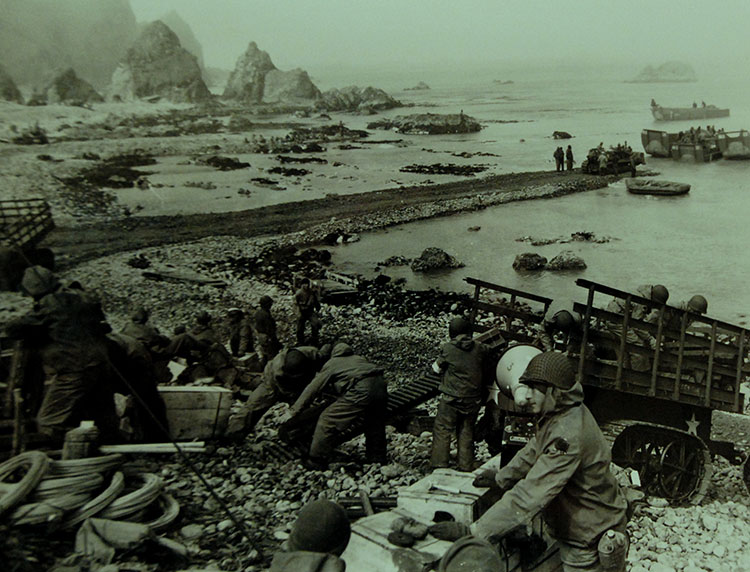
The magnitude of this eruption was larger than any other on record in North America, so large it fueled Geological Survey scientific investigations that helped shape thinking around volcanoes. At Kodiak, 100 miles away from the eruption, the air was thick with ash for 60 hours. It was so dark that a lantern would only light out to arm’s length. The weight of the ash collapsed roofs. (Source)
3) 1958 Lituya Bay Tsunami – A 7.7 magnitude earthquake produced what became the tallest tsunami in the world at 1,720 feet tall, slamming into Lituya Bay. The impact was heard over 50 miles away as around 90 million tons of rock slid down as a result of it. That tsunami traveled into the bay at around 100 miles per hour uprooting millions of trees in its wake. Fortunately, only 5 people lost their lives. (Source)
4) 1964 Good Friday Earthquake/Tsunami – This monster 9.2 magnitude earthquake struck the Prince William Sound region of Alaska and lasted approximately 4.5 minutes killing 131 people – 119 of those were killed by the associated tsunami. It is the second largest earthquake ever recorded. It destroyed roads, buildings, bridges, and even remote towns. (Source)
5) The 2004 Wildfires – Now we’re getting into events even I can remember. The Alaska wildfires of July 2004 (technically starting in June) were the worst wildfires in Alaskan history. 701 fires destroyed 5.4 million acres with smoke that was carried as far east as New England. (Source)
6) The 2009 Mount Redoubt Eruption – This was the biggest eruption of Mount Redoubt ever. It spit ash upwards of 50,000 feet in the air, collapsed the dome of the volcano, covered cars throughout the region in ash, caused massive flash flooding, and resulted in the canceling of a number of flights into and out of the region. (Source)
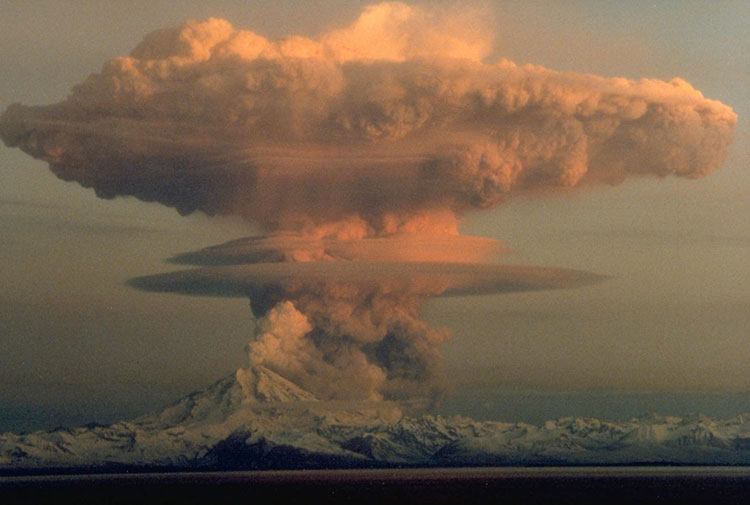
7) 2014 Wildfires – Ten years after the last significant wildfires to strike Alaska, the state faced another round. This was the second largest wildfire season ever in Alaska. It burned 233,529 acres, with the majority of these fires being caused by flying, burning debris, but there were many sources, everything from campfires (third leading cause) to fireworks. The ground was just too dry.
8) Pavlof Volcano Eruption (2016) – This volcano is located near the end of the Alaska Peninsula and is known to produce explosive eruptions and occasional lava flows. But on March 28, 2016 the Pavlof volcano erupted, sending smoke 37,000 feet into the air. The eruption lasted about 20 hours, but fortunately nobody died. Planes throughout the area ended up canceling their flights due to limited visibility, however. (Source)
Preparing for Alaska Earthquakes
Alaska is the most seismically active state in the nation. According to Alaska’s Department of Natural Resources:
Our plate boundary comprises ~2,500 miles of the circum-Pacific “Ring of Fire” where ongoing subduction gives rise to arcs of active volcanoes and the largest earthquakes in the world. In Alaska, the Pacific plate, relative to the North American plate, moves at a rate of ~5.5+ cm/yr (~2.2+ in/yr). The Fairweather/Queen Charlotte fault system in southeast Alaska (more than 620 miles long) is the primary strike-slip structure that accommodates this ongoing subduction from the south. Plate convergence at the southern margin of the state drives distributed crustal deformation on secondary faults more than 400 miles northward into the continental interior.
https://dggs.alaska.gov/hazards/earthquakes.html
The state of Alaska, in partnership with FEMA and the USGS, has created a one-page PDF on how to prepare for an earthquake (download it here). Using that as our guide, Alaska preppers should:
- ASSESS the potential hazards of your home, knowing that the safest places are AWAY from stoves, cabinets, windows, doors, etc.
- IDENTIFY safe places to go during an earthquake, like standing in doorframes.
- PLAN what to di in advance, where to go, identify family meeting points, etc.
- EVALUATE your likely evacuation routes, hazards you’d face along the way, etc.
- PRACTICE your earthquake drills and bug out routes.
- PREPARE what you’re doing here and now.
- SECURE your household (which the document gives more advice on).
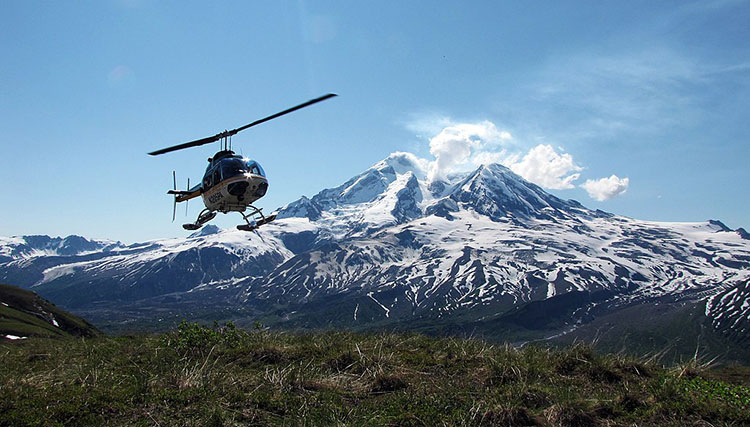
Alaska Preppers – Thoughts to Consider
Food and Goods – It’s been pointed out that Alaska is something of an island. It’s isolated from the rest of the US, having to get most of its goods shipped in from the lower 48. This means that should something ever happen to that supply chain, Alaska is screwed.
If you homestead, hunt, fish, and trap – and there are ample opportunities for all of these in Alaska – I think you can do well with keeping your food supplies topped off here. You really need to have a game plan for your daily goods you’ll need though.
What are you going to do for sugar, flour, toothpaste, medicine, soap, and more? Do you have a steady stock of the essentials? Because if you don’t, you’re going to have to figure out a way to make your own or to barter for it.
Wildfires – Alaska has experienced several devastating wildfires in the past, and if you’re going to live there you need to have a battle plan to deal with such. One of the main things you can do to combat this if you live there is to clear all the trees away from your property.
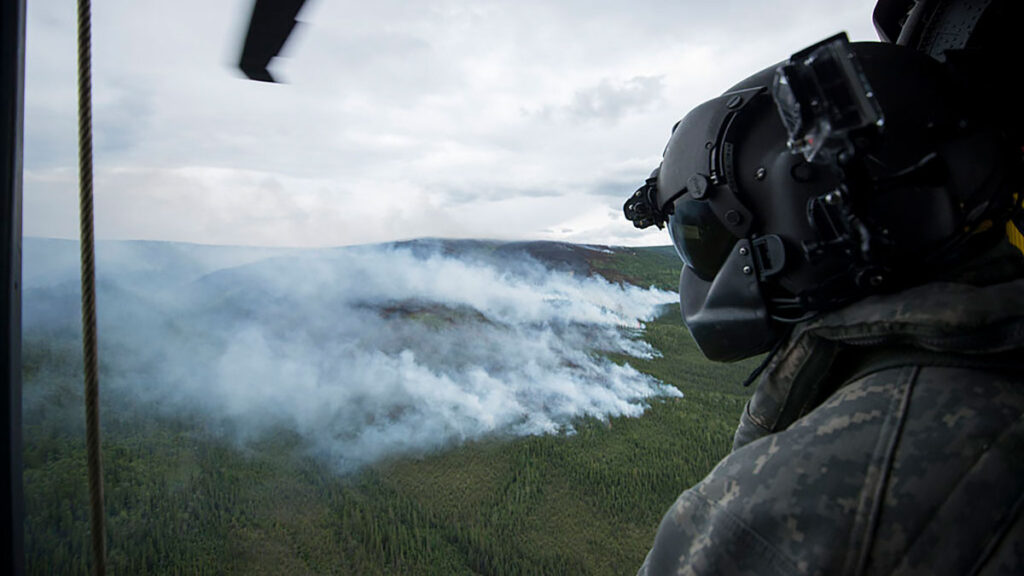
Give yourself a clearing and you give yourself breathing room in a fire, helping to keep the fire from jumping from an overhead branch to your home. In addition to this, I highly recommend investing in a stock of fire extinguishers for your home and having an evacuation plan with bug-out bags at the ready should you need to rapidly get out of town.
Invasion – Perhaps this is not a popular opinion – perhaps it is doom and gloom – but I would most certainly do what I could to be ready in the event of an invasion if I lived in Alaska. You are incredibly close to three of America’s most dangerous enemies (North Korea, Russia, and China). Alaska has been invaded before (the Aleutian Islands campaign during WW2), Alaska has a lot of oil, it serves as a great staging point for continental invasion, and Russia seriously regrets ever selling it to us in the first place.
I’m of the belief that to ignore all these factors under the guise of “that’ll never happened. Not here” is once more normalcy bias at work. And in this case, I think it could lead to some very dangerous outcomes.
Volcano – The only thing I can say for living in a world full of volcanoes is that you better have an evacuation plan. You can fight a volcano but you sure won’t win. Pompeii, Mt. St. Helens, and other volcanic eruptions have taught us this.
If she’s gonna blow, you gotta go.
Grab what you need and get out of there stat. More reason to have a bug-out bag packed and at the ready and a thoroughly mapped out evacuation route. The blast, falling debris, and lava may be far enough away that they can’t reach you, but the dust most certainly will.
Unless you want to end up dying from dust-related pneumonia, I suggest you have the respirators and gear needed to get your family to safety in the event of such. MIRA Safety makes some great particulate respirators.
Alaskan Prepping Links
If you’re looking at finding like-minded individuals in Alaska, you need not look far. Just about every other person you meet in Alaska seems to understand the importance of being prepared for not only winter, but for whatever else may come.
- Learn to Return – Be the one to come home, from Alaska’s “premier and longest running full-spectrum survival school.”
- School of Survival – A survival school based in Alaska.
Final Thoughts on Prepping in Alaska
Alaska basically forces you to become a prepper. The weather does not permit you to be otherwise. It’s here that mankind comes face to face with Mother Nature daily and is forced to a reckoning with the importance of the essentials.
Hopefully however, you’ve found the above information of use in prepping while living within this state.
Are there other aspects of prepping in Alaska you think we should have covered here? Let us know in the comments below!